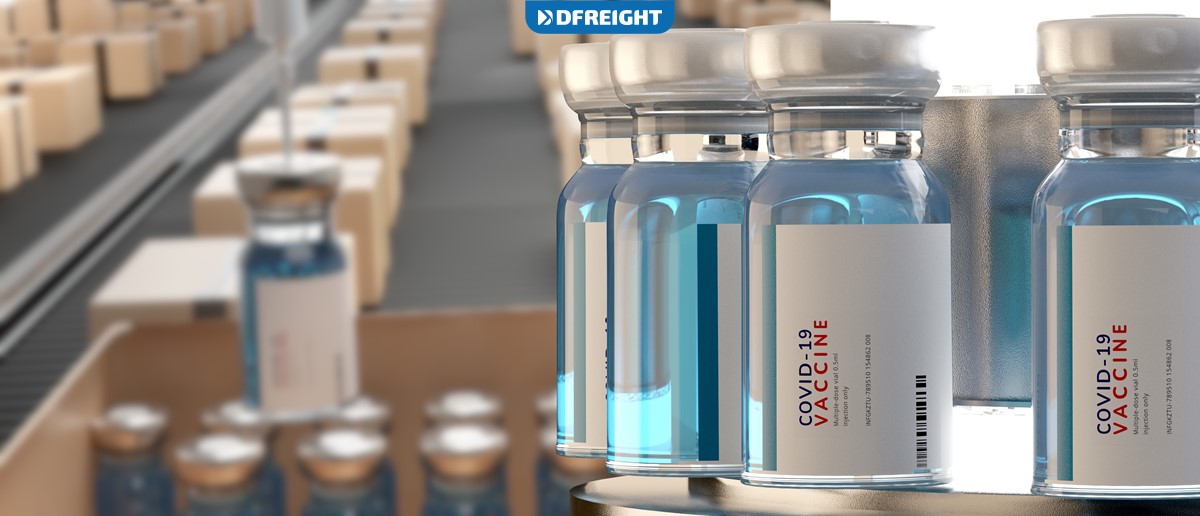Temperature-sensitive products must be kept within a specific temperature range to maintain their quality and integrity. This can be challenging when products are shipped long distances, through different climate zones, and across different seasons. But it is a challenge that must be met to ensure that products arrive in the same condition they left in.
Shipping temperature-sensitive products requires careful planning and coordination. Every step of the shipping process must be considered, from the initial packaging to the final delivery. Even after the product has been delivered, it must be stored and handled correctly to maintain the desired temperature. Everyone involved in the shipping process must be aware of the importance of shipping temperature-sensitive products. Only by working together can the challenge be met and the products be delivered safely and securely.
In this post, we’ll look at the top 6 temperature-sensitive products that need cold chain shipping.
Table of Contents
A Brief Overview of Temperature-Sensitive Products
Temperature-sensitive products are those that are adversely affected by changes in temperature. They must be shipped in a controlled environment that maintains a constant temperature, typically between 2°C and 8°C. This is known as the cold chain.
Many types of temperature-sensitive products exist, including pharmaceuticals, biologics, vaccines, blood and blood products, organs and tissues, and food. Each has its shipping requirements, but all must be kept within a specific temperature range to maintain their quality and efficacy.
Cold chain shipping is essential to ensure that temperature-sensitive products arrive at their destination in the same condition as they left the manufacturing facility. It is a complex process that requires careful planning and execution. Many potential hazards can disrupt the cold chain, including power outages, equipment failures, and human error. That is why it is so important to have a well-trained and experienced shipping team in place. The cold chain is a vital part of the healthcare supply chain, and temperature-sensitive products must be shipped in compliance with all applicable regulations.
Product #1: Insulin
Shipping insulin can be tricky, as it needs to be kept cold during transit. The best way to ship insulin is to use a particular insulated shipping container. These containers can be found at most pharmacies or online. When packing the insulin, be sure to include an ice pack or two to keep it cool. Once it is packed, seal the container tightly and label it clearly with the word “Insulin” and the date. Then, send it via overnight shipping to arrive as quickly as possible.
Product #2: Vaccines
The process of shipping vaccines is a critical part of ensuring that they remain safe and effective. Vaccines must be shipped and stored correctly to maintain their potency and to prevent them from being contaminated. Vaccines are shipped in special containers designed to protect them from temperature extremes and other environmental hazards. The containers are insulated and equipped with temperature monitors to ensure that the vaccines remain within the acceptable temperature range.
Vaccines must be shipped using a method to ensure that they arrive at their destination safely and on time. The most common method of shipping vaccines is by air, but they can also be shipped by land or sea. The shipping process is just one part of ensuring that vaccines are safe and effective. Once they arrive at their destination, vaccines must be stored properly to maintain their potency. Vaccines must be stored in a cool, dry place and should never be exposed to sunlight or extreme temperatures.
Product #3: Blood & Blood Products
There are many different types of blood and blood products, and each must be shipped in a different way to maintain its integrity and viability. Whole blood must be refrigerated at all times and can only be shipped in special containers that are designed to keep it cold. Plasma must also be refrigerated but can be shipped in regular containers as long as it is kept cold. Red blood cells must be kept at room temperature and can be shipped in standard containers as well. Platelets must be kept at room temperature but must be shipped in special containers that allow them to circulate.
Product #4: Organs and Tissues
The shipping of body organs and tissues is a process that requires great care and precision. The organs and tissues must be packed in a way that will keep them viable for transplantation. When shipping body organs and tissues, it is important to use a cool, dry method of transportation. Ice packs or gel packs can be used to keep the organs and tissues cool during transport. It is also essential to make sure that the organs and tissues are well-wrapped and cushioned to prevent damage. When shipping organs and tissues, it is best to use a shipping service that offers tracking and insurance in case of damage or loss.
Some organs, such as the heart, can only be transplanted if they are used within a few hours of being removed from the donor. Other organs, such as the liver, can be transplanted up to 24 hours after being removed from the donor. Tissues can be shipped fresh, or they can be frozen for later use. Fresh tissues must be used within a few hours of being removed from the donor, while frozen tissues can be stored for up to a year. With the proper care and precision, organs and tissues can be shipped safely and effectively to their destination.
Product #5: Pharmaceuticals
Shipping pharmaceuticals is a complex and highly regulated process. There are many different factors to consider when shipping these products, including temperature, humidity, and light exposure. The packaging and labeling of pharmaceuticals must meet strict standards, and the products must be shipped to ensure they will remain potent and effective.
Various packaging options are available that can help keep products within the proper temperature range, and it is crucial to choose the right option for each product. Humidity and light exposure are also important considerations when shipping pharmaceuticals. These products can be sensitive to these environmental factors, and it is important to take steps to protect them. Packaging options that can help to minimize exposure to these elements are available, and it is important to make the right choice for each product.
Product #6: Food & Beverages
When shipping food and beverages, there are a few things to keep in mind. First, the temperature is key. If you’re shipping something that needs to be kept cold, like ice cream, pack it with dry ice or gel packs. If you’re sending something that needs to be kept warm, like coffee, use insulated packaging.
Second, the packaging is essential. Use sturdy boxes and padding to protect your food or beverage. Third, shipping times are important. If you’re shipping something perishable, make sure to ship it overnight or with 2-day shipping, or learn more about how to ship frozen food overnight. Fourth, be aware of food safety. If you’re shipping something that needs to be refrigerated, make sure to include a cold pack. Finally, be aware of customs regulations. Some countries have restrictions on what food and beverages can be imported.
Conclusion

The shipping of temperature-sensitive products is a complex and highly regulated process. There are many different factors to consider when shipping these types of products, including temperature, humidity, and light exposure. The packaging and labeling of temperature-sensitive products must also meet strict standards, and the products must be shipped to ensure they will remain potent and effective.
Various packaging options are available that can help keep products within the proper temperature range, and it is essential to make the right choice for each product. These products can be sensitive to environmental factors, and it is vital to take steps to protect them. With the proper care and precision, temperature-sensitive products can be shipped safely and effectively to their destination.
If you’re looking for a reliable and affordable way to ship temperature-sensitive products, look no further than DFreight. We offer various refrigerated shipping options to keep your products safe and sound during transit. We also provide tracking and insurance for your peace of mind. Contact us today to learn more about how we can help you with your shipping needs.
FAQs
What is the cold chain?
The cold chain is a process of shipping temperature-sensitive products in a controlled environment. This environment maintains a constant temperature, typically between 2°C and 8°C.
What are some examples of temperature-sensitive products?
There are many different types of temperature-sensitive products, including pharmaceuticals, biologics, vaccines, blood and blood products, organs and tissues, and food.
How can I ensure that my temperature-sensitive products remain safe and effective during shipping?
When shipping temperature-sensitive products, pack them with ice packs or gel packs to keep them cool. Use sturdy boxes and padding for the packaging, and ship overnight or 2-day shipping for perishable items. Be aware of food safety by including a cold pack for refrigerated items and check customs regulations for imported items.














